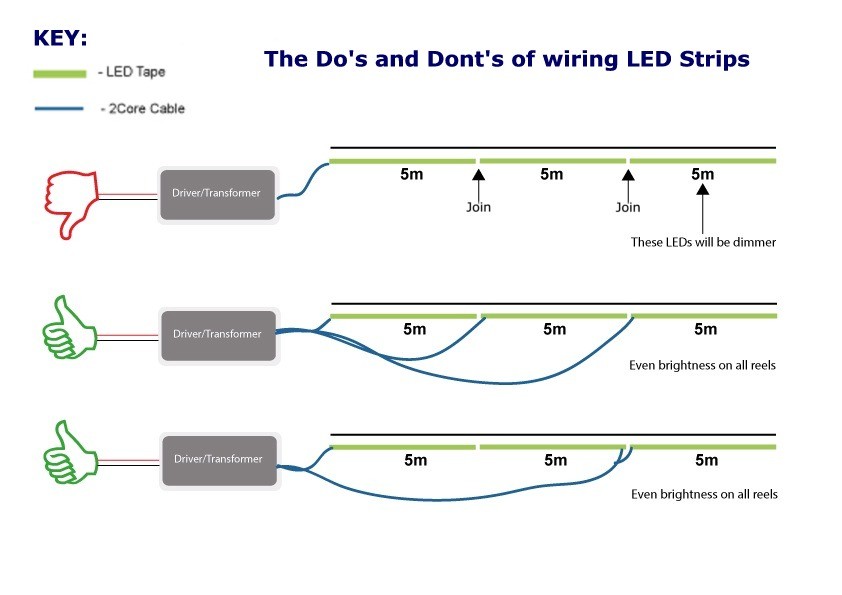How to wire LED Strips
- There are no more items in your cart
- Shipping
- Total €0.00
Can I use LED strips outside?
Waterproof or Water-Resistant Rating: If you plan to use LED strips outdoors, it's important to choose strips that have a suitable waterproof or water-resistant rating. LED strips designed for outdoor use often come with an IP65, IP66, IP67, or IP68 rating, indicating varying levels of protection against dust and water. The higher the IP rating, the more protection the strip has against water intrusion.
UV Resistance: Exposure to sunlight and UV rays can degrade materials over time. Look for LED strips that are designed to be UV resistant, as this will help prolong their lifespan and maintain their color quality when used outdoors.
Installation Location: Consider where you plan to install the LED strips. Will they be exposed to direct rain, splashes, or other moisture sources? Ensure that the chosen LED strips are appropriate for the specific conditions they will face.
Power Supply and Wiring: Make sure that the power supply and any wiring or connectors you use for the LED strips are also suitable for outdoor use. Outdoor-rated connectors and proper cable management will help prevent water intrusion.
Mounting Surface: Ensure that the mounting surface for the LED strips is clean, dry, and suitable for adhesive attachment. Some LED strips come with adhesive backing, but you might also need additional mounting options such as clips or brackets, depending on the surface and conditions.
Voltage and Electrical Safety: Check the voltage requirements of the LED strips and make sure the power supply you use is compatible. Additionally, follow proper electrical safety practices when installing and connecting the LED strips.
Protection from the Elements: Depending on the installation location, you might need to provide additional protection for the LED strips. This could include installing them in enclosures or under overhangs to prevent direct exposure to rain.
Temperature Considerations: Outdoor temperatures can vary significantly. Choose LED strips that are rated for the expected temperature range of your location to ensure they operate reliably.
Dimming and Control: If you plan to control the LED strips using a remote, smartphone app, or other means, ensure that the control device is also suitable for outdoor use.
Maintenance: While outdoor-rated LED strips are designed to withstand outdoor conditions, it's still a good idea to periodically inspect and clean them to ensure optimal performance.
By considering these factors and selecting appropriate LED strips designed for outdoor use, you can enjoy the benefits of outdoor lighting while ensuring safety and longevity.










Leave a comment